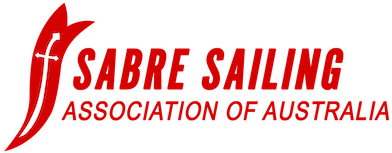Home › Forums › Development & Design › Rigs & Sails › What is the ideal rake for a sabre
- This topic has 3 replies, 2 voices, and was last updated 19 years, 10 months ago by
Meryl Todd.
-
AuthorPosts
-
June 9, 2004 at 10:25 am #5753
heymacaulay
KeymasterI am tall in stature and am concerned about the coorect rake. I seem to very under-powered at the moment.
June 9, 2004 at 11:28 am #6412heymacaulay
KeymasterI think this has been started by a very tall sailor from the bottom of the bay who should know the answer to this. However if I am wrong he will soon tell me.
There is no magic mast rake for a Sabre for the following reasons.
1.Most boats have slightly different hull shapes.
2.A variety of sails from different sailmakers with the same potential speed are used in the current Sabre fleet.
3.As sails get older the cloth stretches which varies the curvature of the sail and hence the centre of effort changes.
4.The sailing techniques can vary between individual sailors.The technique for determining mast rake is as follows.
1.Sail the boat perfectly flat to windward in a side deck sitting i.e. Not hanging out.
2.Let go of the tiller.
3.The boat should slowly but steadily turn into the wind.
4.The tiller should have a low but steady pressure to move to leeward.The boat must have some weather helm as described above when perfectly flat to cope with the times when a slight heel to windward occurs which is more often than you realise, particularly if you are keeping the boat as flat as possible. This can be caused when the wind speed drops at the end of a puff or the bottom of a wave.
A sure sign that the mast rake is not correct is an inability to point as high as other boats.
How about that Russell!!
June 10, 2004 at 11:16 am #6413heymacaulay
KeymasterIn my reply to Russell I omitted to mention that position of the mast will also affect the final mast rake to properly balance the boat.
I also should have added a bit of philosophy on the subject of boat tuning.
I you want to beat the champion you will need to do it bettter, not just copy their set up. It is most important to learn how to optimise your boats rig yourself. Copying someone elses set up will never teach you why certain things are done or not done. The modern theory of coaching seminars seems to get someone to do the hard work and then pinch their knowledge. While this theory appears time effective it makes its adherents into followers not leaders and only reinforces the grip that the champion has on the trophy.Here endeth the lesson
Phillip Johnson
Sabre 1644
Illegitimatti non carborundumJuly 12, 2004 at 11:54 am #6414Meryl Todd
ParticipantPhillip should be congratulated on his excellent resposes to this and the similar question on mast step position.
A general agreement, but not proven, is a dinghy goes to windward better when it carries a degree of mast rake. A typical rake if applied to a Sabre would be about 200mm measured at the gooseneck from a vertical line to the black band when the waterline is level.
As Phililip says there should be a slight weatherhelm going to windward, say about 3-5 degrees. Thus, in theory the mast step position should be varied such that the weather helm is optimal when there is some 200mm of rake.
There is also general agreement that forward rake is best for downwind sailing. The Sabre can not alter its mast rake while sailing, so it has to be a compomise decided by what the skipper hopes to achieve, for example fast first beat to get out of the pack, as against better marginal planning if you are a light weight.
In practice, most people first decide on where to fit the mast step[subjective decision] then find the best rake by trial and error to get the best helm characteristics[cbjective decision]. The rake which gives the best balance will vary by dinghy shape, sail characteristics, skipper’s skiill and also weight. For example, a heavy skipper will need to sit further forward to stop the tuck dragging, and thus need slightly more rake. The rake would also need yo be changed for fresh or salty water.
My suggestion is fit the mast step according to fashion but work hard to find the best rake for that setting. It seems a wide range of mast step settings with the correct rake all give similar good speed. Using the wrong rake for the chosen position is the quickest way to the back of the fleet due to the most effective brake on a dinghy- the rudder!
A possible limit to changing the existing mast base position is the distance to the shrouds to remain in the measurement rules.
I am just refitting a derelict Sabre hull for mainly social sailing, my first dinghy sailing for 40 years, and my choice of mast step position was decided on by reference to Rule 86. Where the halyard lock could legally go without cutting the existing wire!
-
AuthorPosts
- The forum ‘Rigs & Sails’ is closed to new topics and replies.
